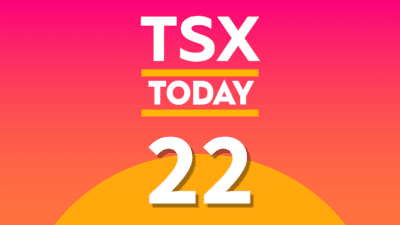The pandemic and the efforts to contain it have erased some three million jobs in Canada in March and April. The unemployment rate hit a record high of 13.7% in May. The world has plunged into a deep recession after the economies around the world shut down to slow the spread of COVID-19. So why did the TSX – which was down about 37% on March 23 from the February peak – rebound more than 40% despite dire economic figures?
The stock market isn’t the economy
The thing we need to understand is that the stock market is not the economy. The stock market is forward-looking. The TSX and other stock indexes are leading indicators of what’s going to happen in the economy.
The stock market will always predict a recovery before economic data actually shows it, as investors set prices based on what they expect to happen, not what is actually going on.
The TSX has rallied because investors think things will get better in three to six months. They believe that the worst is over.
When things go wrong, even a small improvement can encourage investors to buy. Stocks start to rise when the data suggests things are not as bad as expected. Things don’t have to be great. If prices try to account for the end of the world and the end of the world is slightly less likely to occur, stocks can go up.
Canada added almost one million jobs in June, but is still almost two million down from pre-COVID-19 levels.
Investors are also overlooking earnings, which are hit by the pandemic. Many companies do not provide guidance, but it may not matter much.
Central banks’ massive stimulus also helps support the stock market. Falling interest rates make stocks more attractive because bonds have low yields.
Canadians are optimistic about the reopening of the economy. Hopes that a vaccine will be available soon is fuelling the TSX rally. Stock prices suggest investors expect a V-shaped recovery after COVID-19, with the economy returning to normal in a year.
Many risks could derail the TSX rally
Concerns about the rally seem to be mounting. Investors are getting more cautious. If there is a second wave, the recovery could take the shape of a W. Job gains could turn negative again, which would be disastrous for the economy.
As there is a lot of uncertainty about how long the recession will last, anything can happen. A sustainable recovery is unlikely to take place until there is a vaccine.
As long as there is hope that a vaccine is going to be available soon, the TSX can continue to rise. But if coronavirus cases rise to the point of getting out of control and if governments are forced to reinstate lockdowns, the TSX could crash big time.
It’s time to get rid of overpriced and high-risk stocks as they will be the most hit by a market crash. Aritzia, with a five-year PEG of 30, is especially vulnerable. The fashion retailer has seen its sales and profit drop as it had to close its stores during the pandemic.
Consumer spending is still not back to the level it was pre-pandemic and might not be for a long time, so it’s best to stay away from consumer discretionary stocks.







